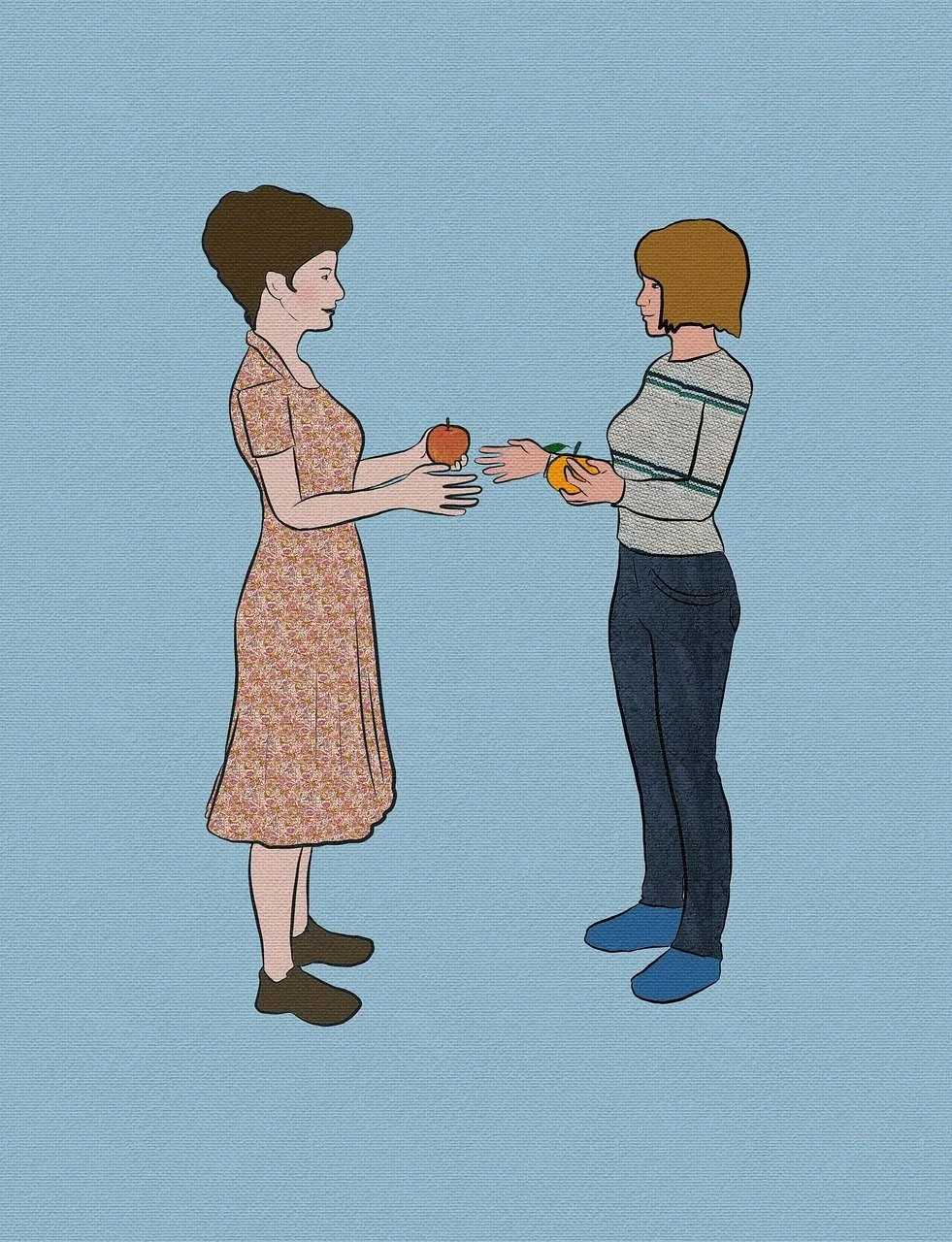The Power of a Reciprocity Ring: Creating Community Through Mutual Support
In a world that often emphasizes individual achievement and competition, the concept of a reciprocity ring offers a refreshing and powerful alternative—one rooted in generosity, collaboration, and mutual aid. Whether you're part of a workplace team, a coaching group, a learning community, or a circle of friends, a reciprocity ring can transform how you relate to others and how support flows within your community.
In this post, we’ll explore what a reciprocity ring is, why they work, what they look like, and tips to running an effective reciprocity ring, and extend an invitation to take part in one.
What is a Reciprocity Ring?
A reciprocity ring is a structured group activity where participants make a request for something they need—personally or professionally—and the group works together to offer ideas, resources, or connections to fulfill those requests. The concept was developed by Wayne and Cheryl Baker, co-founders of the company Humax and authors of All You Have to Do Is Ask. The reciprocity ring is also explained in Adam Grant’s book Give and Take.
Why Reciprocity Rings Work
Reciprocity rings tap into the science of giving and receiving, rooted in social psychology, organizational behavior, and the neuroscience of connection. Here’s why they’re so effective:
People want to help: Research shows that people are more likely to help when they are directly asked, especially in a structured setting.
It uncovers hidden resources: Individuals often don't know what others in their network can offer until they ask.
It fosters psychological safety: The structure of the ring invites vulnerability and sharing, which can deepen trust.
It promotes positive norms: By modeling generosity, reciprocity rings encourage a culture of mutual support.
It boosts morale and engagement: Participants leave feeling seen, valued, and inspired by the community around them.
Virtual and In-Person Formats
Reciprocity rings can be held in-person or virtually, making them accessible and adaptable for different groups. Here’s how you can organize one:
In-Person Setup:
Arrange seating in a circle to promote openness.
Use flip charts, sticky notes, or a whiteboard to track requests.
Allow time for mingling before or after to strengthen connections.
Virtual Setup:
Use a video conferencing tool (Zoom, Teams, etc.).
Use a shared document or chat feature to record requests and responses.
Consider using a collaborative whiteboard like Miro or Jamboard to visualize contributions.
How to Facilitate a Reciprocity Ring
A well-run reciprocity ring is efficient, inclusive, and energizing. You don’t need to be a professional facilitator—just follow a few simple steps:
Ideal Group Size
6 to 24 people. Too few limits the ideas, too many can reduce participation. Larger groups can be split into smaller breakout rooms.
Total Time
60–90 minutes for a single round, depending on the size.
Shorter "micro" rings can be done in 30–45 minutes with smaller groups or fewer requests.
Sample Agenda
Here’s a sample 90-minute agenda for a reciprocity ring session:
1. Welcome & Purpose (5–10 minutes)
Set the tone: mutual support, confidentiality, and curiosity.
Explain the concept and ground rules.
2. Requests Round (30–60 minutes)
Each participant briefly states their request (1–2 minutes max).
The group offers help, ideas, or connections (2–4 minutes).
A facilitator tracks responses on a shared visual (whiteboard or document).
3. Sharing & Reflection (15–20 minutes)
Invite participants to share insights, surprises, or gratitude.
Highlight how many people contributed and what was offered.
Optional: plan follow-up or future ring.
4. Wrap-Up & Next Steps (5 minutes)
Encourage follow-through on offers.
Share a resource list or a group follow-up platform.
Tips for an Effective Reciprocity Ring
Encourage specific requests: “I need help designing a newsletter layout” is better than “I want to improve my business.”
Normalize small offers: Not all help needs to be big—an idea, podcast recommendation, or article can be powerful.
Follow up: Participants should reach out afterward to follow through on offers.
When I first heard about this idea, it really excited me and I had a dream about offering this as an event. Many people I know work hard at giving, but not at asking for help. Reciprocity is important. Stronger and healthier bonds are created when we learn how to give and receive in different ways. If you are as intrigued by this idea of asking for help and seeing what happens as I am, come so we can learn and experience together. The date has been set for Saturday August 16th, in person and virtually at our home from 11:00-12:30 with a potluck to follow. More details will be emailed out. I hope you can make it. Another virtual event is going to be scheduled for the late fall.
Final Thoughts
Reciprocity rings offer more than just practical problem-solving—they foster connection, gratitude, and a deeper understanding of the power of collective intelligence. Whether you're building community in a workplace, growing a coaching group, or simply seeking a more generous and supportive way of working with others, a reciprocity ring is a powerful tool worth exploring.
Why wait? All you have to do is ask.

